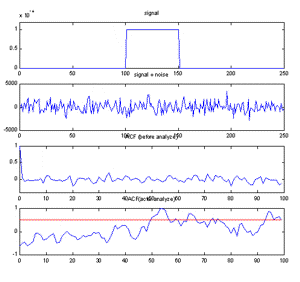Requested by NineSigma's RFP#30476-A1-01 Unfortunately I lost original file of this RFP with my flash drive and I got no reply from Ninesigma on my inquiry to provide me with a copy. So I shall try to describe it in a few words as I remember: Detecting Metal Inclusions in Fused Silica (Quartz) Tubing. In a production process of silica/quartz tubing it
occasionally get very small particles of metals used in oven structure - W
or Mo. They are too small (0,1-1micron) and rare for direct visual or
microscopic detection, but can severe deteriorate optic fiber produced of
the tubing later.
Back to LaserLab Researches.
Small and Fast Electric Water Heater Liner/Coating Technology for Faucet Spouts Compact Boiler Design/Technology Holographic seal defended from holographic copying Compact Boiler Design/Technology Technology to Reduce Foaming in a Boiler, Origin of life experiment enlightened by laser
CONTACTS: Tel. +38 099 437 2436 (Viber, Telegram)
|
Achieved Technology For Small Metall Particles Detecting in Silica (Quartz) Tubing . Proposed Technical Approach This unique filtering properties of analysis proposed are illustrated by the following graphs showing relatively small signal pulse (representing here scattered by metal particle light, the first curve, signal intensity level is 0.0001) with 5000times and more powerful white Gaussian noise (instead of light scattered and reflected by pure quartz tube, the second curve)– with obviously no signal traces in this sum picture. “Filtered” ACF gives us nonzero result (red line indicates threshold level, the fourth curve) in signal presence and zero – without signal (the third curve).
Two obvious differences – the only scattering particle to be detected and moving in well known direction against multiple particles casual Brownian movement are not of principal significance here. The matter is that (in assumption of quartz tube homogeneity in axial direction) ACF for scattered and reflected light will be similar for each part of a tube, so metal particle detection can be achieved just like in above discussed graphs. Proposed detection method needs no mechanical contact with tube surface hence it causes no impact on tubing surface purity; it also can be applied both in production process as well as for ready-made tubes. There exists probability (although small) that red-hot oven heat radiation traveling along tube walls as in waveguide in production process will be enough for particles detection, eliminating the need of external probe light source. 2. More simple way can be tested for ready-made tubes. It is based on metal particles excitation and their emission detection. Excitation method is well known and reliable, it should act both on W and Mo particles. Estimated emitted power in visual/near IR region from 0.1micron particle is about 0.5x10-8W, so it will look like 100W emitting lamp at 14km distance. Sufficiently good s/n ratio in this case can be obtained in a dark chamber and it will hardly be achieved in production process. Unfortunately our first experiments with modeling samples and equipment available still give no very promising result. Estimated detection limits for particle sizes is just near needed 0.1-1 micron. Common video movement detection system for low illumination can be used for particles detection in this method and there are no limits for particles volume density in a case of tubes discussed. Coupling efficiency to metal inclusions for the method discussed is many orders of magnitude more then that of quartz glass. Anticipated signal responce time can be less then 1 sec with reasonable total power consumption for excitation source (less or of kW order). Estimated detection system cost less then $10000. Combination of both methodes can give more detection reliability. Proposed Plan and Deliverables Experimental setup assembling and preliminary tests - 1 month Proof of concept on prototype samples - 1 month Proof of concept on production tubes - 2 months System optimization and implementation - 6 months. Proposed Budget Client’s funding proposal looks like reasonable.
|
